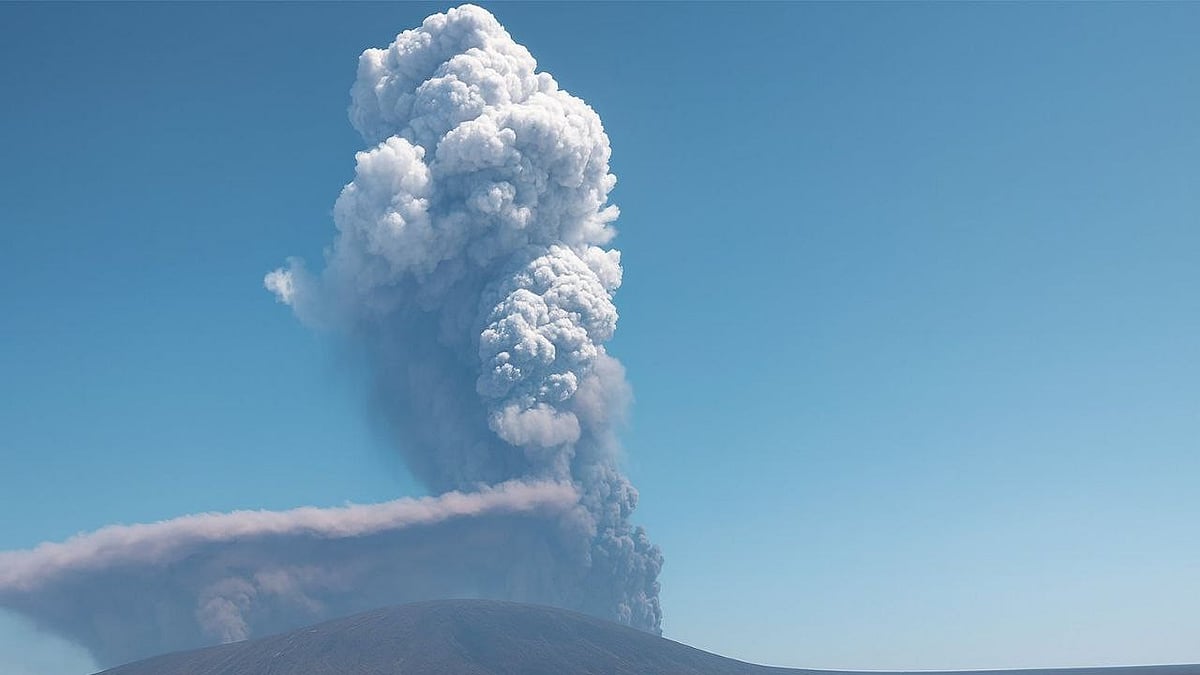Nation
Ash cloud from Ethiopia volcano to clear India by 25 Nov evening: IMD
The ash, carried by strong winds from the Hayli Gubbi volcano, has already disrupted flights in western and northern India

Volcanic ash clouds generated by a major eruption in Ethiopia have drifted across several parts of India over the past 48 hours but are expected to clear the country’s airspace by 7.30 pm today, 25 November, the India Meteorological Department (IMD) said.
The ash, carried by strong upper-level winds from the Horn of Africa, has already disrupted flight operations in parts of western and northern India and prompted aviation alerts from multiple meteorological centres.
The source of the disturbance is the Hayli Gubbi volcano, a shield volcano located in Ethiopia’s Afar region, which erupted on Sunday. The eruption produced a towering ash plume that reached an altitude of around 14 km (45,000 ft), high enough to enter major international flight corridors. From there, the plume spread eastwards across the Red Sea and over the Arabian Peninsula before curving towards the Indian subcontinent.
“High-level winds carried the ash cloud from Ethiopia across the Red Sea to Yemen and Oman and further over the Arabian Sea towards western and northern India,” the IMD said. Forecast models on Monday and Tuesday indicated the ash’s potential to affect airspace over Gujarat, Delhi–NCR, Rajasthan, Punjab and Haryana — regions that sit directly under busy air routes linking South Asia with Europe, Africa and West Asia.
IMD director-general Mrutyunjay Mohapatra said satellite imagery and dispersion models show the ash clouds now drifting northeastwards towards China, gradually thinning as they move out of Indian airspace. “The ash clouds are moving away from India and will clear by early evening,” he said.
Published: undefined
Aviation authorities treat volcanic ash incursions seriously because ash particles can damage aircraft engines, clog ventilation systems and reduce cockpit visibility. In recent history, eruptions such as Iceland’s Eyjafjallajökull in 2010 demonstrated how airborne ash can ground thousands of flights worldwide.
While the current Ethiopian plume — the result of the first eruption of the volcano in recorded history — has not resulted in widespread cancellations in India, airlines have been adjusting routes and altitudes to avoid the affected layers of airspace.
The IMD said its Met Watch Offices in Mumbai, New Delhi and Kolkata issued ICAO-standard Significant Meteorological Information (SIGMET) warnings to airports and airlines. These advisories, based on inputs from Volcanic Ash Advisory Centres (VAACs), identified specific coordinates and flight levels to be avoided. Continuous monitoring, the department noted, allows airlines to revise flight plans, including fuel calculations and alternate routing, to ensure safety.
Although the immediate threat is expected to subside by this evening, the IMD will continue to track residual ash pockets as they disperse over East Asia. The event, officials said, underscores the cross-border nature of atmospheric hazards and the importance of international coordination in aviation meteorology.
Experts say the massive ash cloud from Ethiopia’s Hayli Gubbi eruption, which crossed the Arabian Sea and reached India on Monday night, is now drifting over parts of north India, prompting aviation authorities to issue safety advisories for airlines. However, they noted that the cloud is largely confined to mid-levels of the atmosphere and is unlikely to affect air quality.
With PTI/IANS inputs
Published: undefined